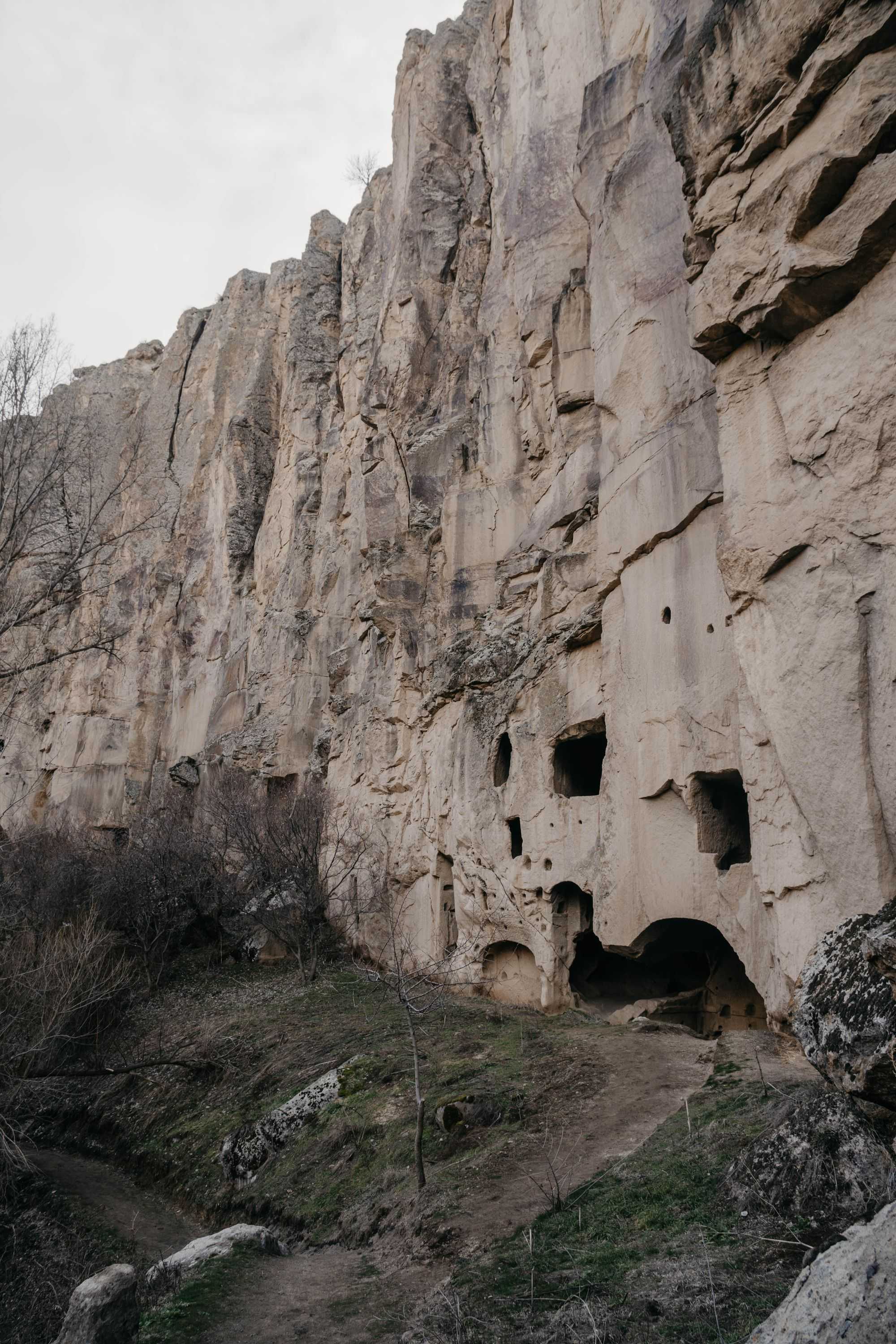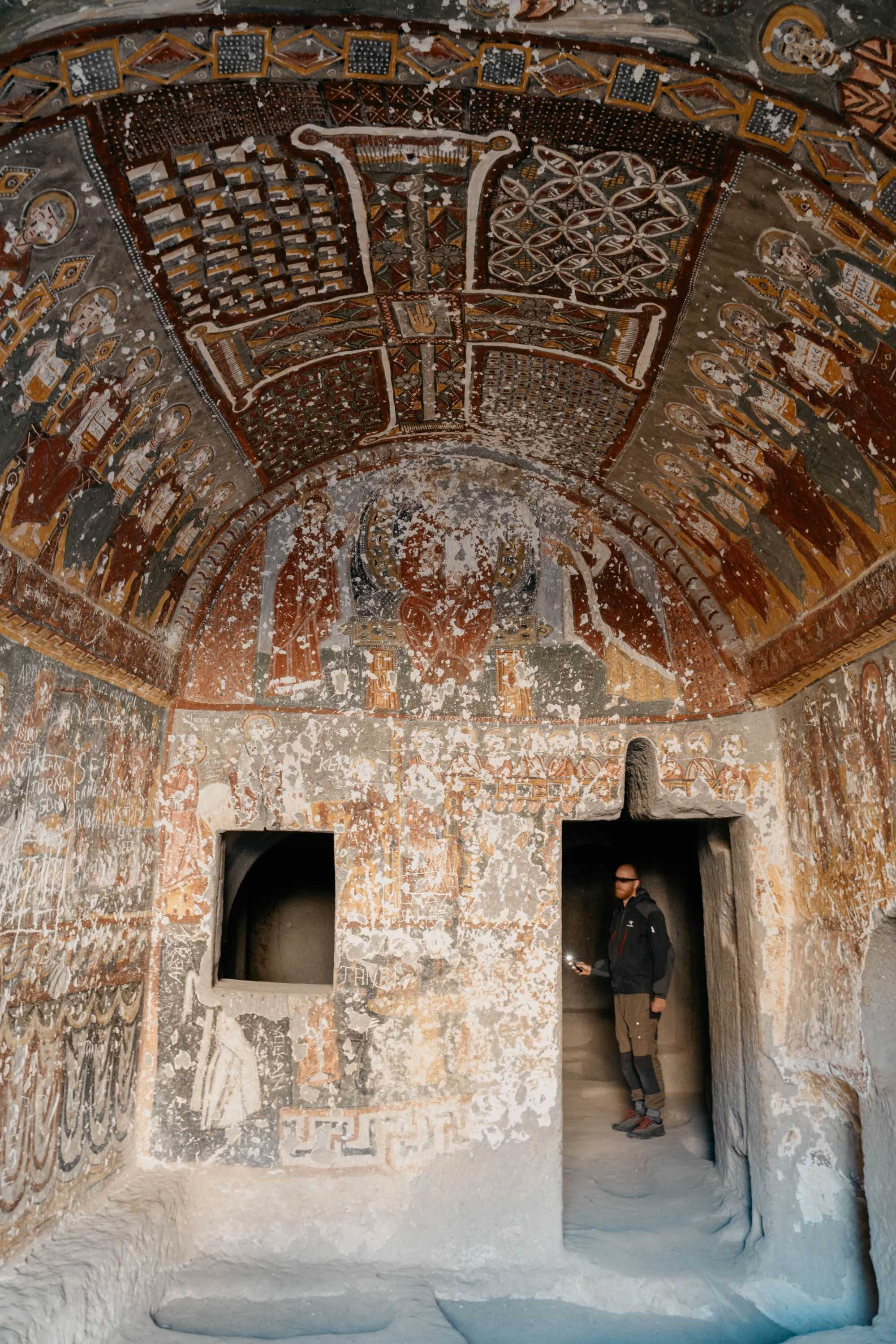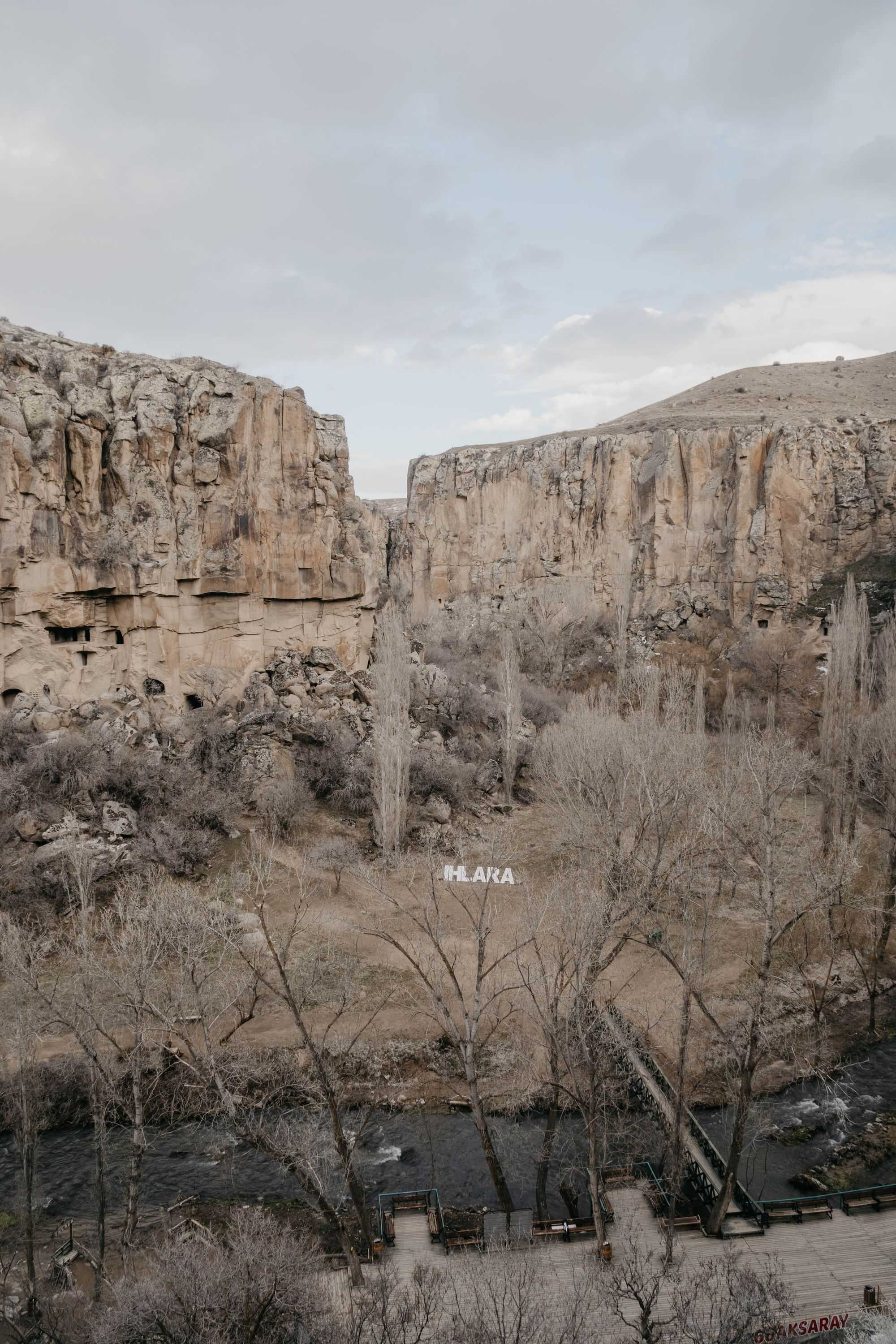Turn around and cycle on
Days marked by wind and weather, turning back and reorientation. We find our ways, even if not always at the first attempt.
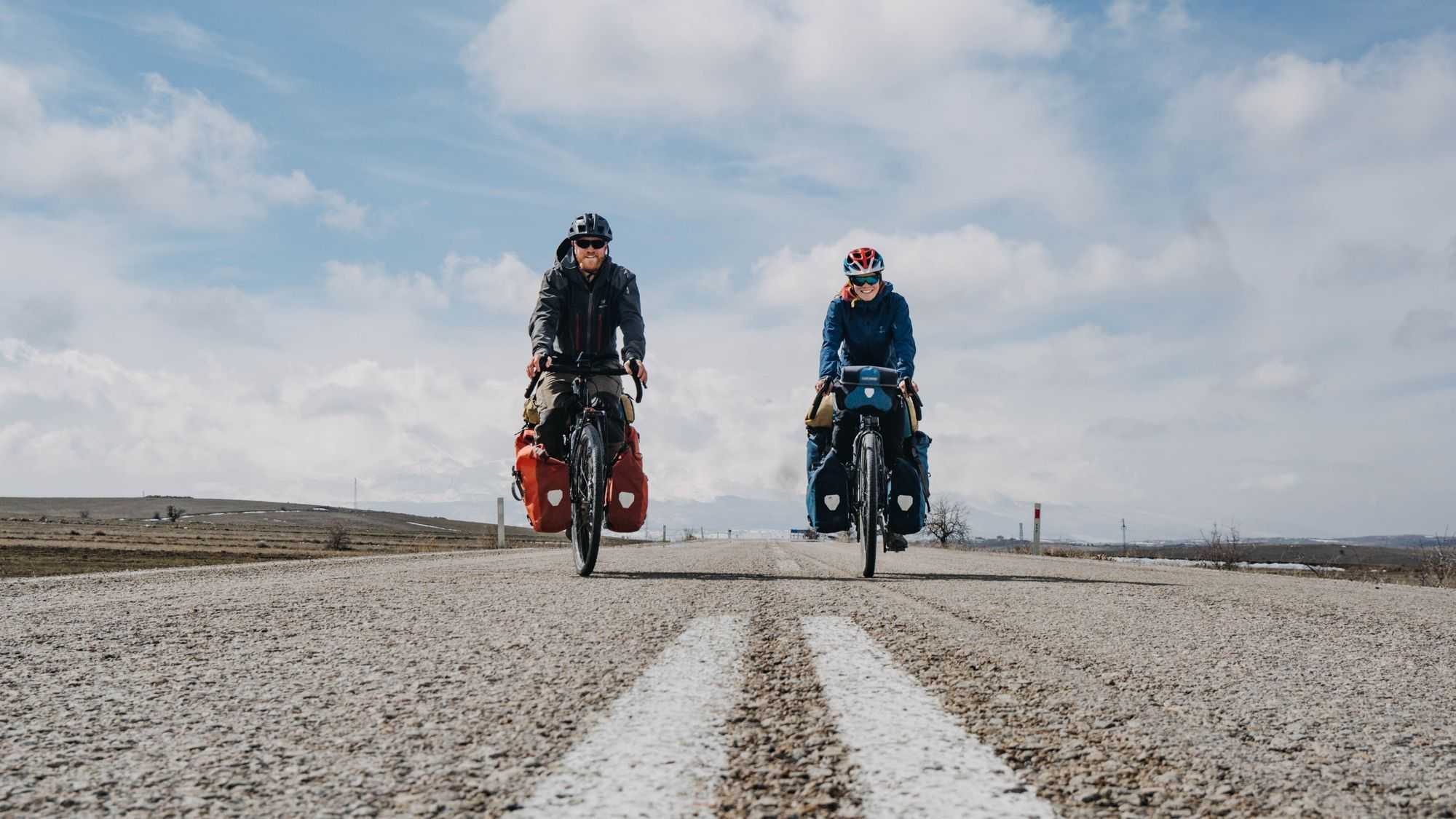
Antalya, the well-known city in the south, is a first milestone on our route through Turkey. We arrive in the city on a beautiful sunny Sunday afternoon and follow the kilometre-long cycle path along the coast towards the centre. The path leads through a long park and on this afternoon the whole city is outside. Families, children, dogs, everyone is enjoying the beautiful day. Once again we are very impressed by the picnic skills of the Turks. They all have camping chairs with them, some even have wooden tables and chairs, and then they have proper barbecues. The Turks are real picnic professionals and know how to celebrate eating outdoors.
We use the time in Antalya to rest, celebrate our first wedding anniversary and plan the next steps. Easier said than done. We actually want to leave the coast and head towards Central Anatolia. But there, winter conditions still prevail and the weather forecasts are rather bad. Nevertheless, we have to dare, otherwise we will run out of time (the visa is valid for 3 months and can only be extended in a complicated way).
Rested and motivated, we set off on the next section. The sunny weather has disappeared and steady rain with light thunderstorms set in. This weather has one advantage. On the way out of town is the Düden waterfall, which plunges into the sea. Due to the bad weather, the water masses are enormous and it is an impressive sight.
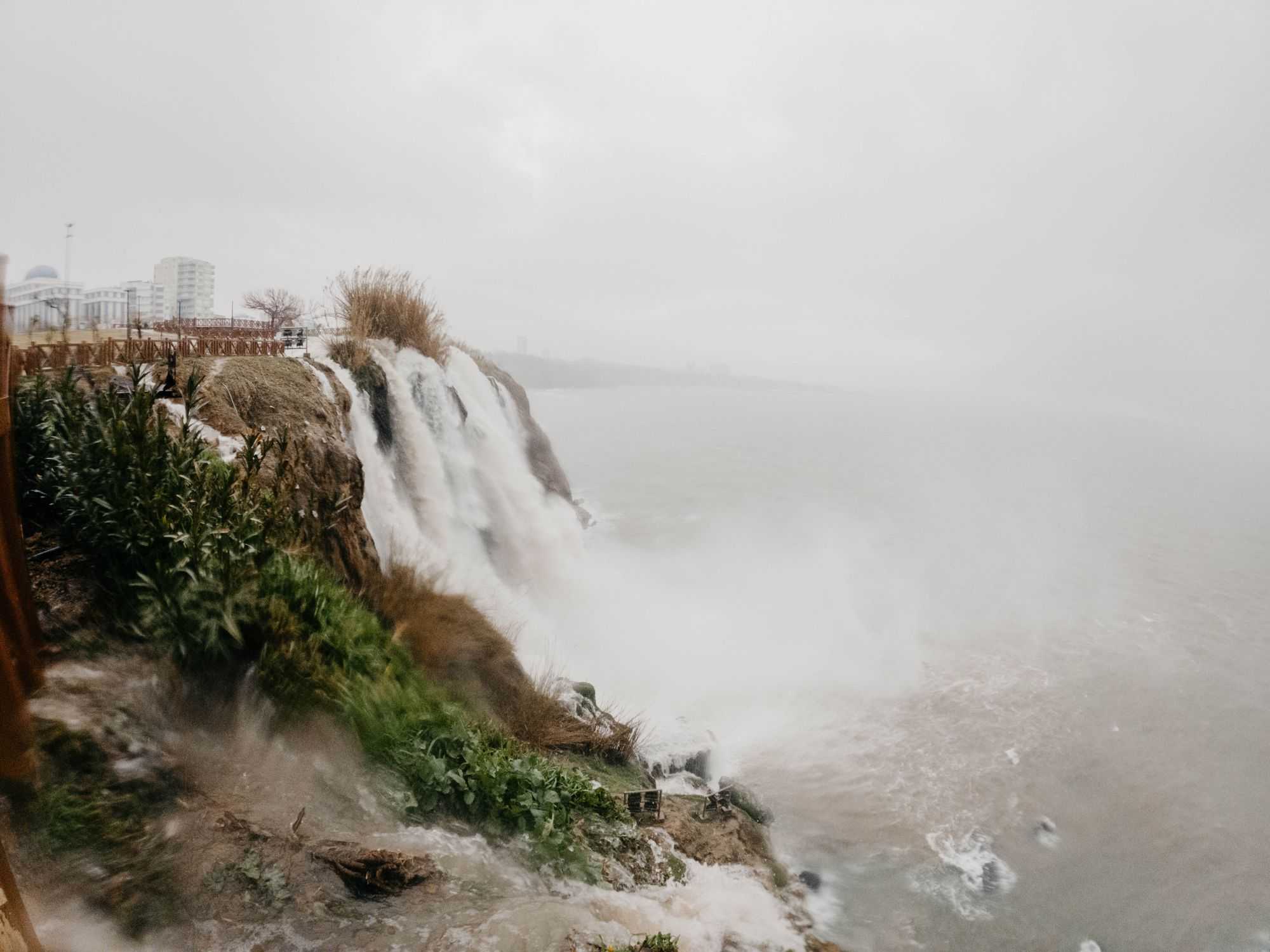
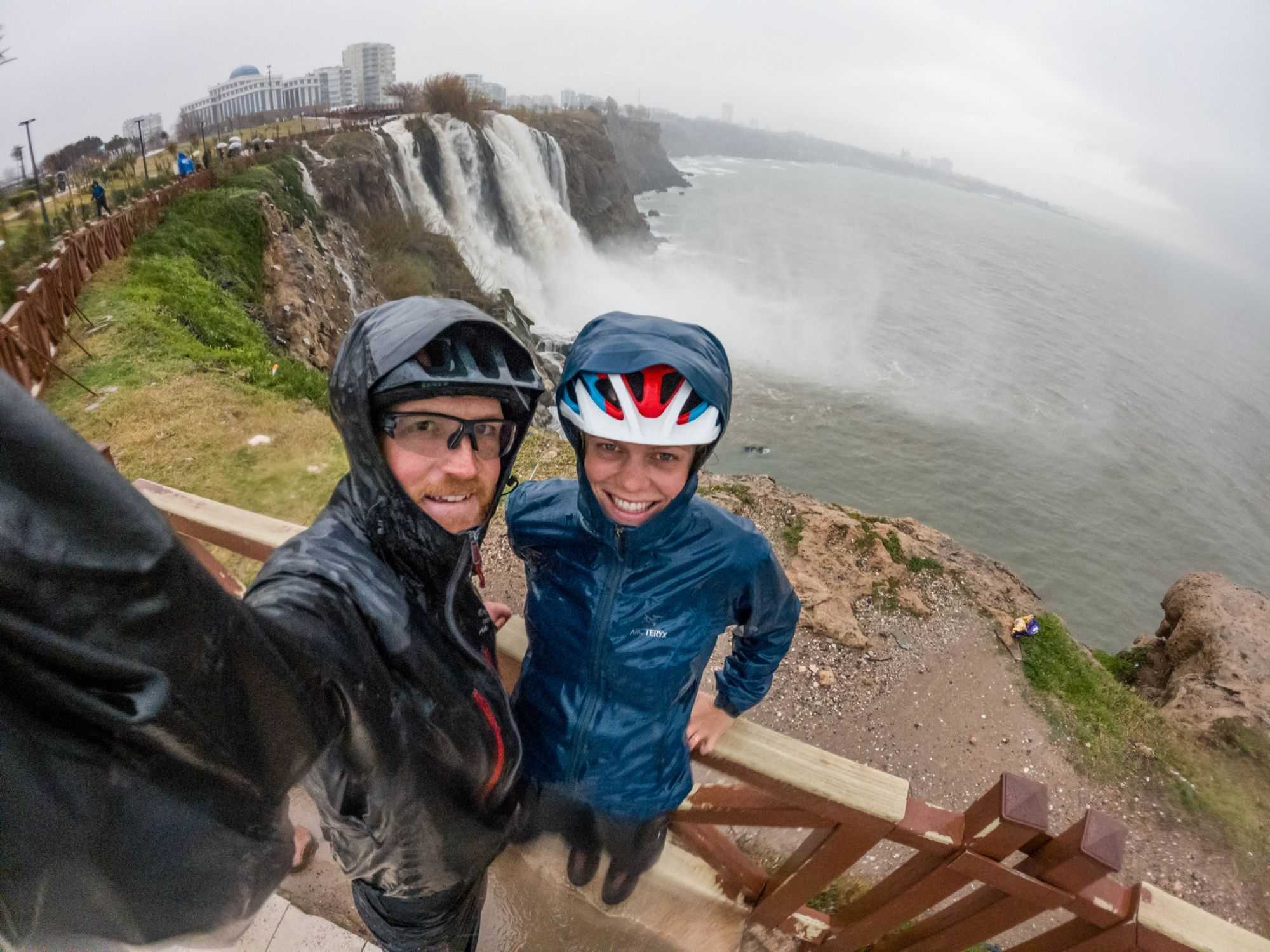
The rest is quickly told. We pedal our kilometres along the coast, oversized hotel complexes separate us from the sea and the rain accompanies us without interruption. At the end of the day, we are grateful to get the last room in a hotel and dry our clothes. The next day is also wet and grey, but the route now becomes more varied. Upstream we drive through a rather remote region (at least in low season), surrounded by (snow-covered) peaks, pretty forests and picturesque streams. In one village, we search somewhat desperately for a restaurant to have lunch. The village gentlemen take care of the problem and shortly afterwards we are sitting somewhere in a kind of unofficial canteen, are served an extensive lunch including dessert and are not allowed to pay a single lira for it in the end. Once again, we are overwhelmed by the Turkish hospitality. We are extremely grateful. Unfortunately, we have to decide to turn back the next day. The route leads through sparsely populated areas with many metres of altitude and over a pass that no one knows for sure if it is passable at all or completely covered in snow. So we take a look at the Köprülü Gorge, eat a delicious trout fresh from the river and cycle back to the sea in dry weather.
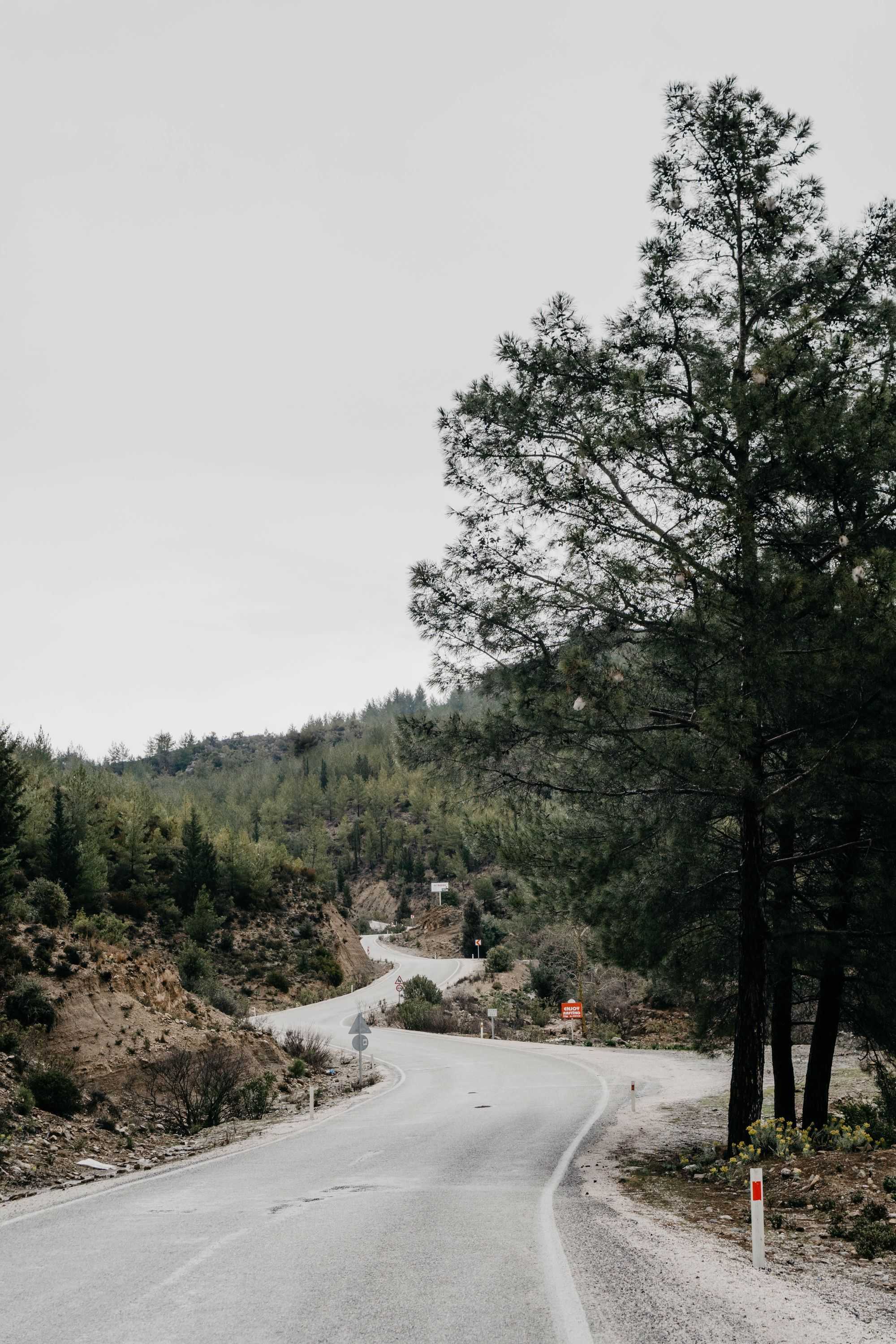
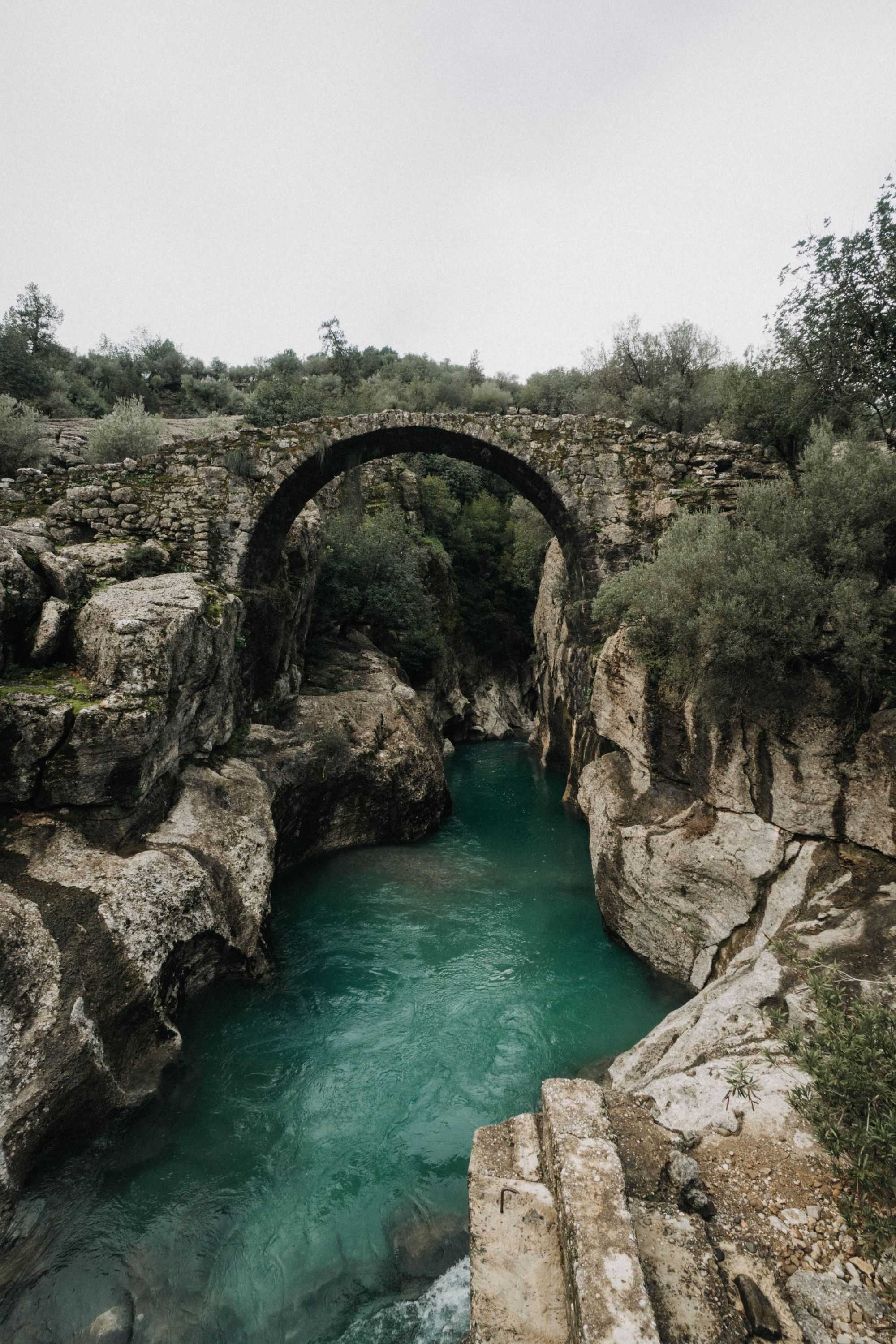
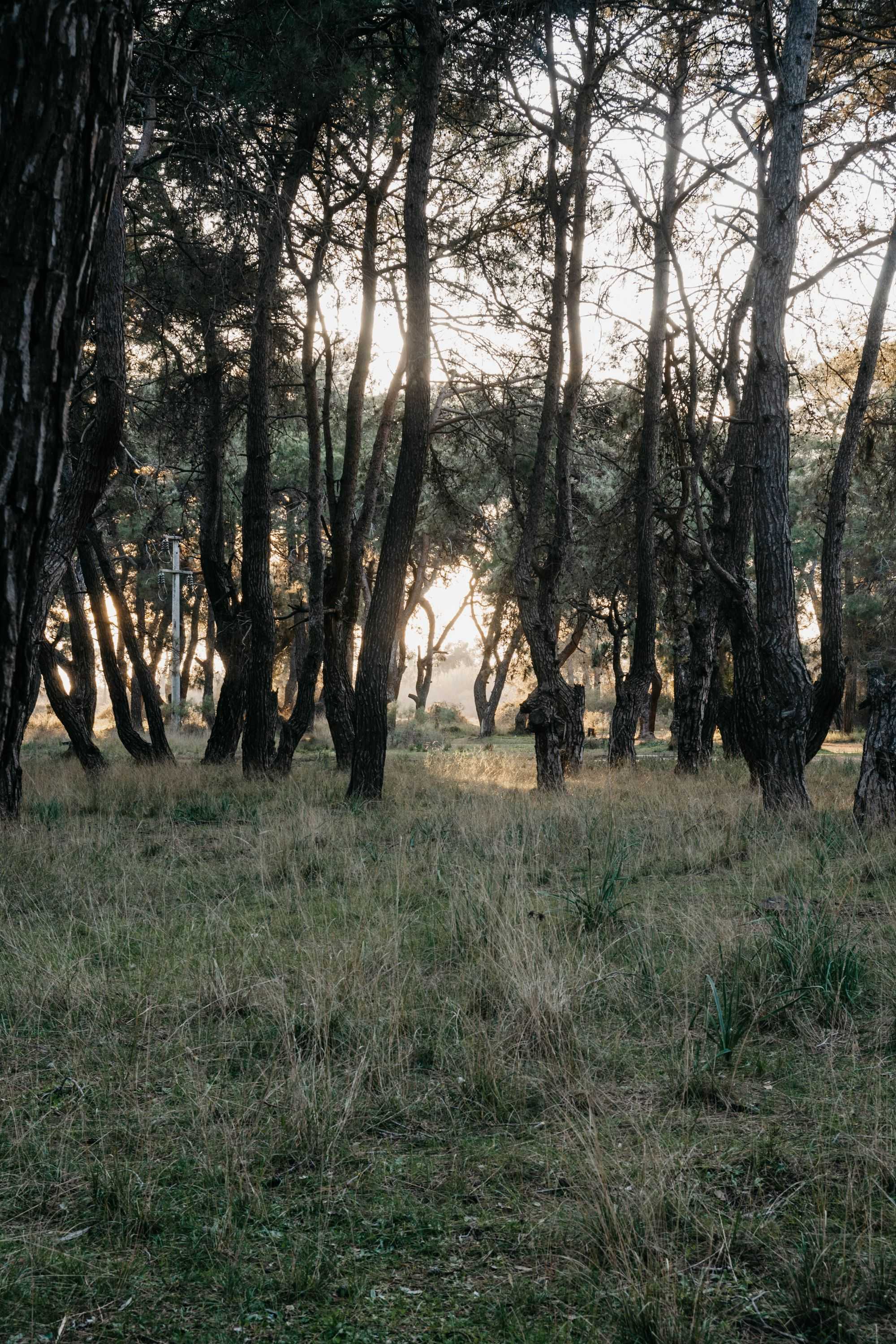
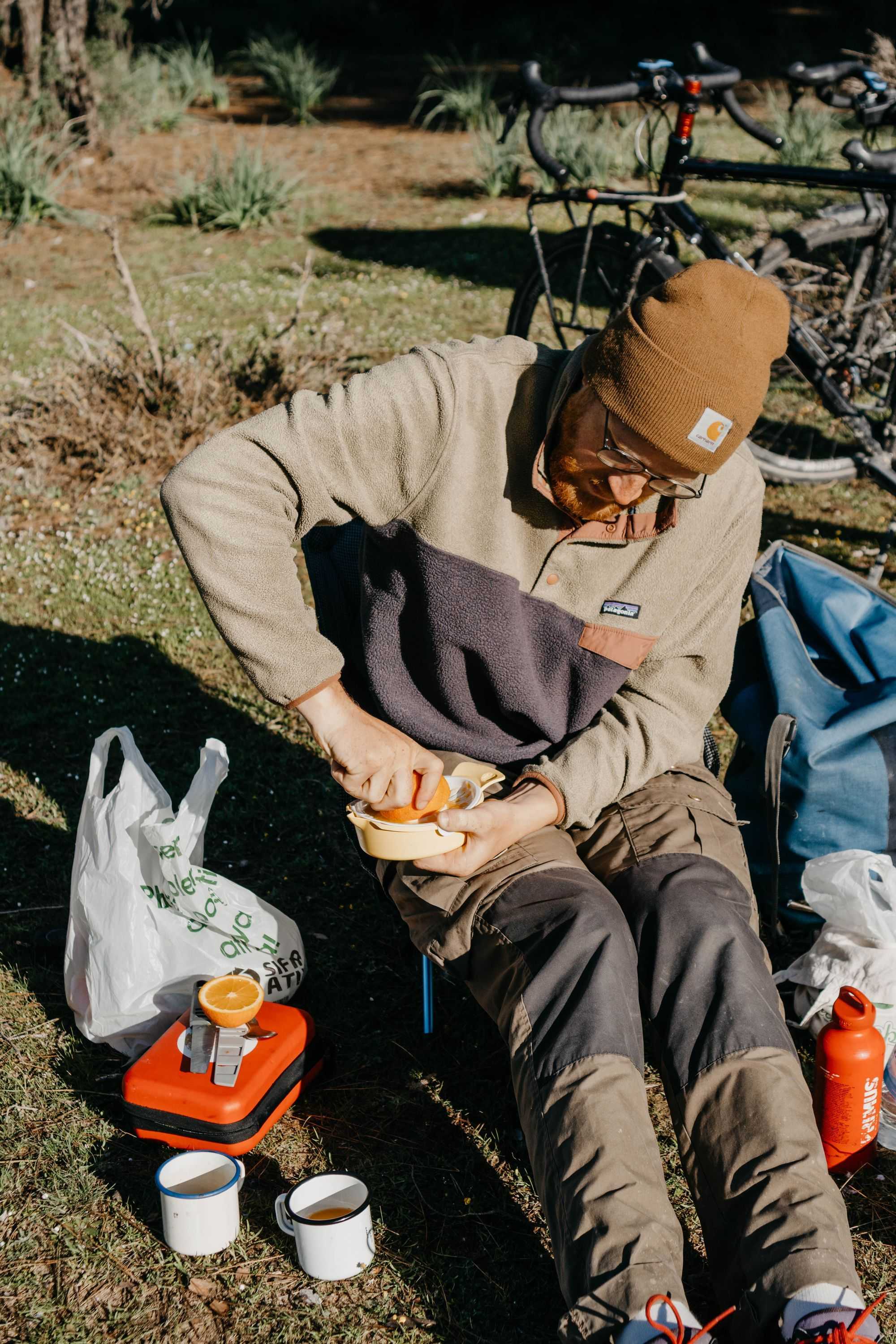
There the day comes to a conciliatory end. We find a great place to camp by the sea, end the evening around the campfire and wake up to bright sunshine. With freshly squeezed orange juice in our stomachs (we treated ourselves to a small juicer; the oranges are everywhere, dirt cheap and super good), we jet off to Manavgat. We decided to go for another bus ride. This way we can save ourselves a few days of cycling up the mountain to the plateau and, most importantly, we don't have to cycle over the snow-covered pass at 1700m above sea level.
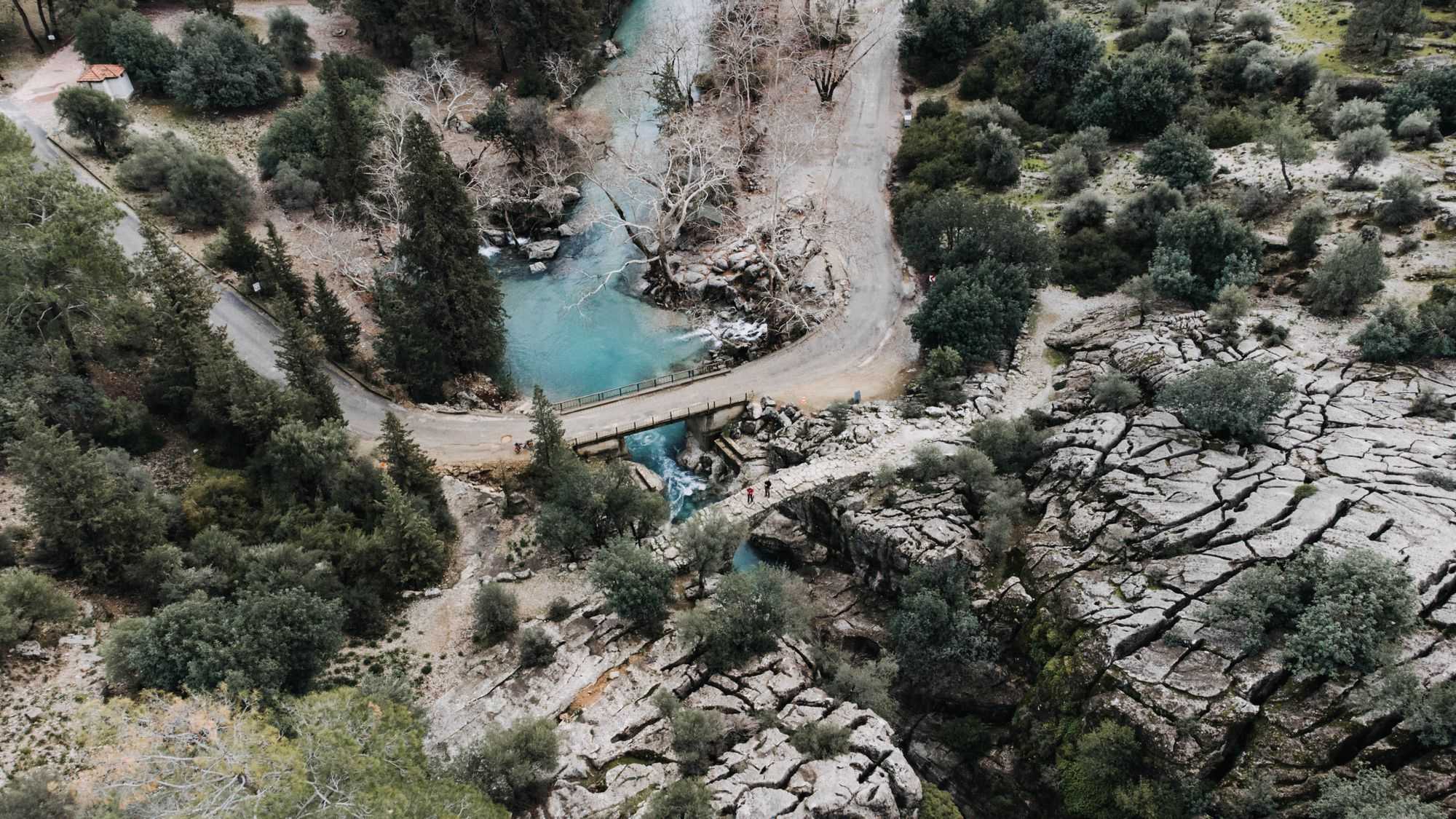
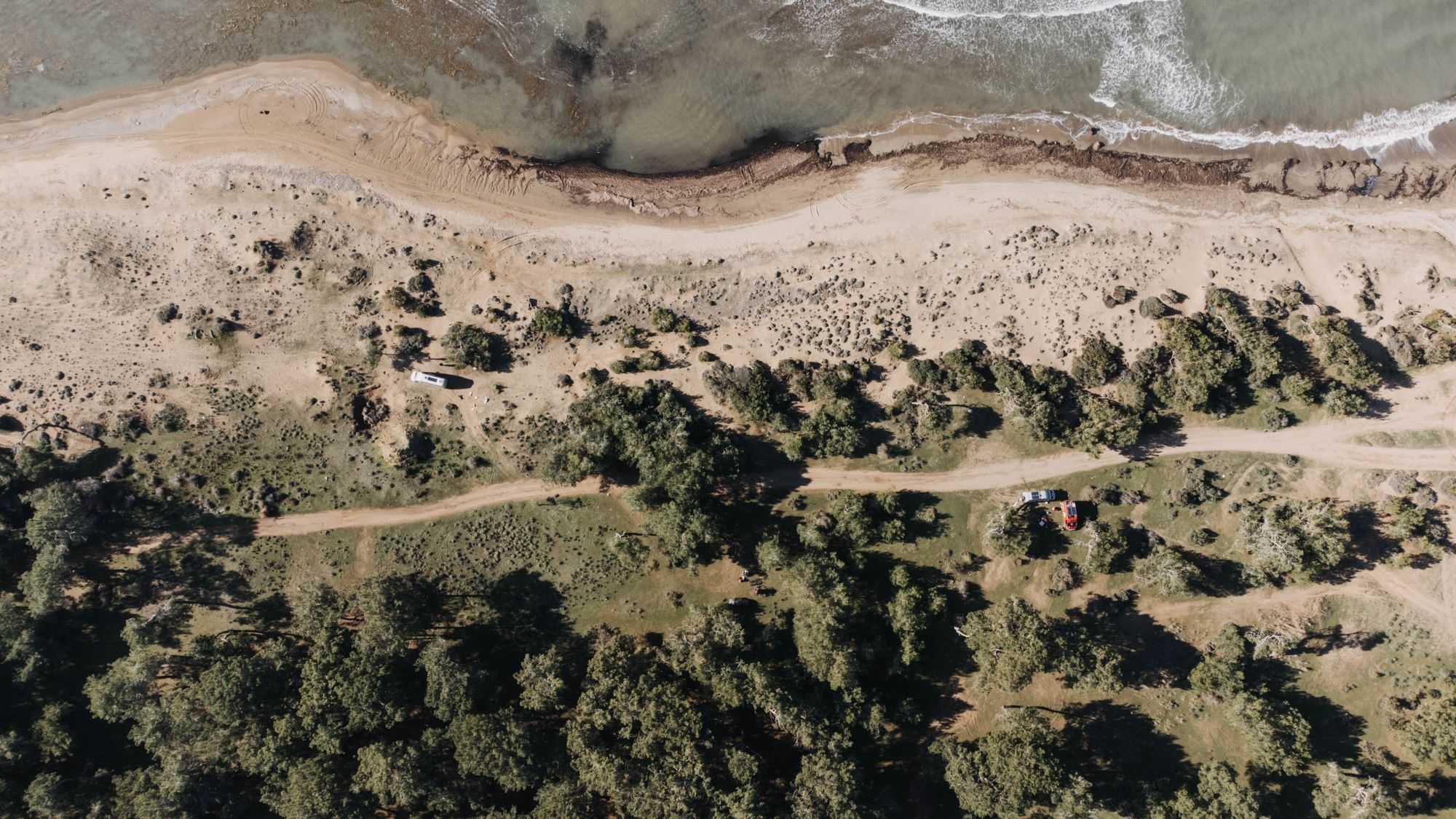
Taking the bus is easier said than done. History repeats itself and is a nerve-wracking experience every time. At the ticket office we buy the tickets. We are told that it is no problem to take bicycles and there is no surcharge. Great. The bus arrives, the looks of the bus driver and attendant speak volumes. Bicycles certainly can't be taken along. Some discussions, back and forth, the bikes are loaded after all (less gently than we would like), but for an extra charge. Other passengers lend a hand so that everything fits in. Unfortunately, the tie of the gallantly dressed bus attendant gets grease on it, which worsens his mood even more. All's well that ends well. The bicycles and luggage are loaded. The bus attendant is happy again after we have given him a wet wipe to clean up and when unloading he is visibly proud that he has mastered this task. We, for our part, are happy that everything went well and that our bicycles arrived safely.
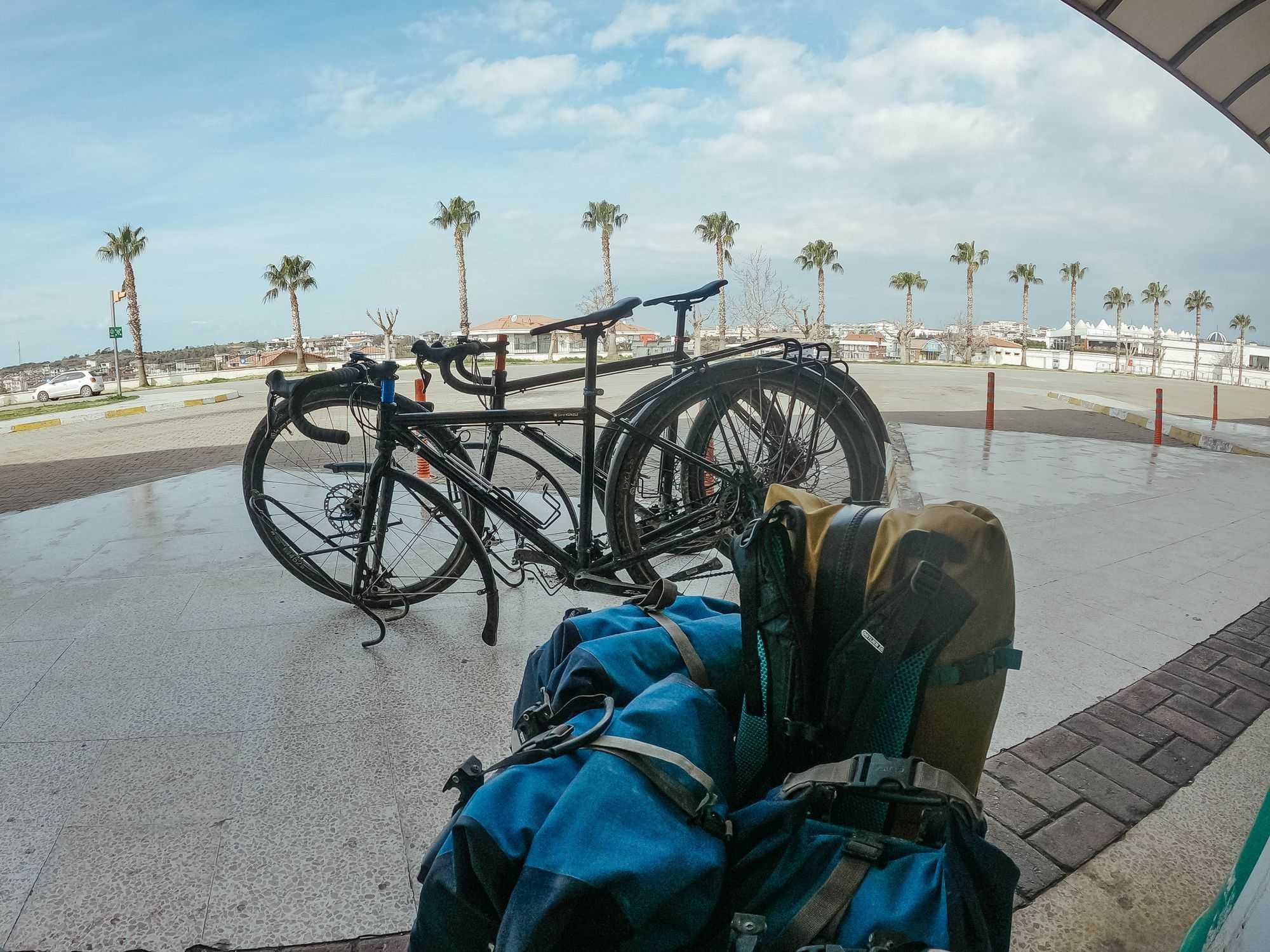
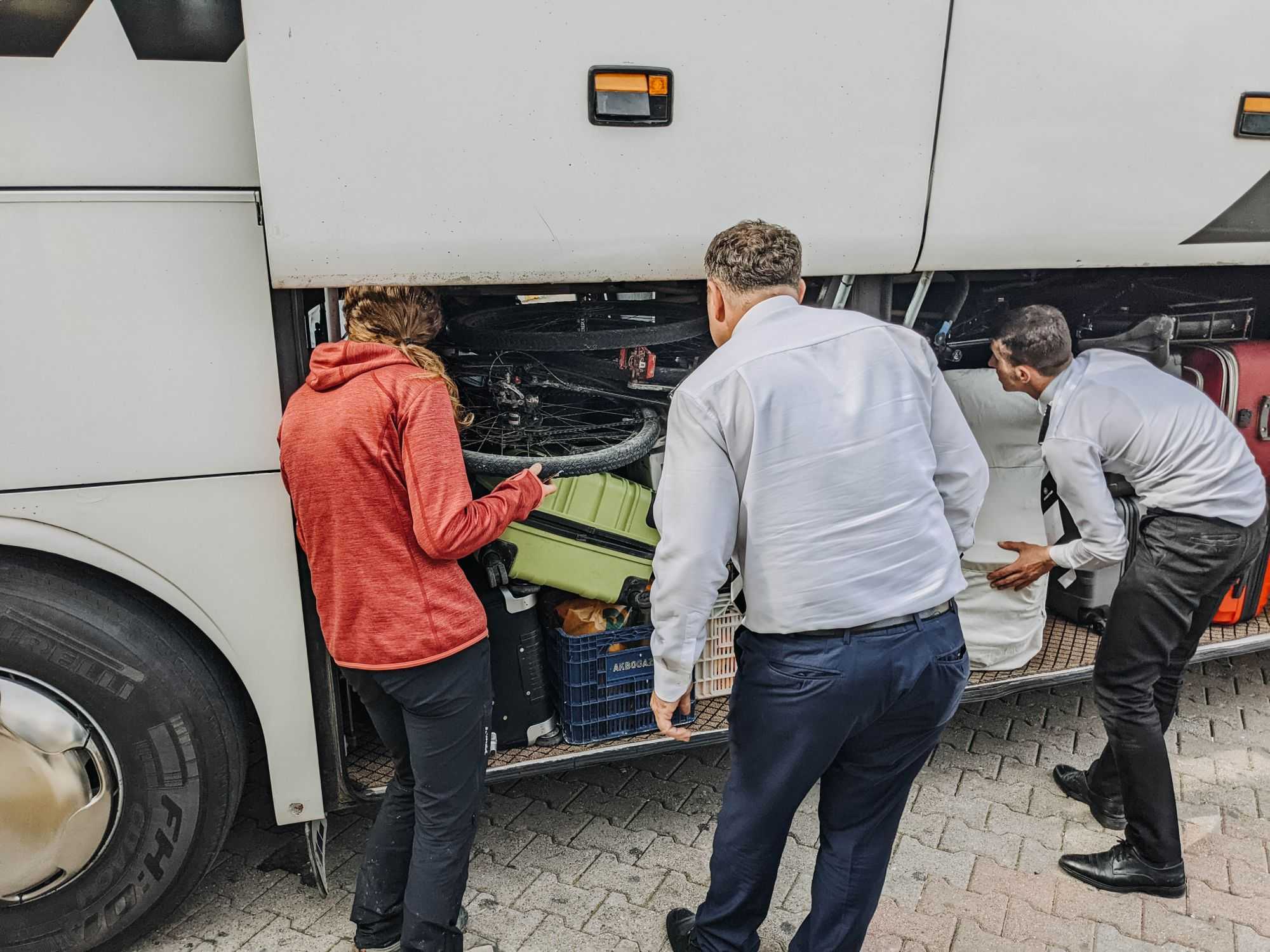
Konya is a large city at 1200m above sea level with about 1.3 million inhabitants and a religious centre. The order of dervishes originated there and is still a place of pilgrimage for Muslims. We linger because it snows and rains for several days. But even on the day of the continuation, the weather is no better. We want to leave anyway. There are 100km of flat, straight main road ahead of us, hardly any infrastructure, no overnight accommodation. Well wrapped up, we set off in the snow flurry. Konya has excellent cycle paths, some of them even have handholds in front of the traffic lights where you can hold on so that you don't have to stand out. Outside the city, the conditions get worse and worse. In addition to the snow, there are strong gusts of wind, our fingers and toes are already starting to get hypothermic and then the road is closed. We wind our way through a long line of cars. The police let us pass, we want to go to the next petrol station to warm up and evaluate the situation. Frozen through, we reach the small, old petrol station and inside we are offered Çay and heating. We stay for about 1h, the weather rather worse than better, the wind is whistling and the road is snow-covered and there are still at least 80km ahead of us. A hopeless situation. For the second time in a couple of days we are forced to turn back. So we fight our way back to Konya against the wind, where we find a good hotel to forget the frustration. We treat ourselves to a beer. Tomorrow we'll try again.
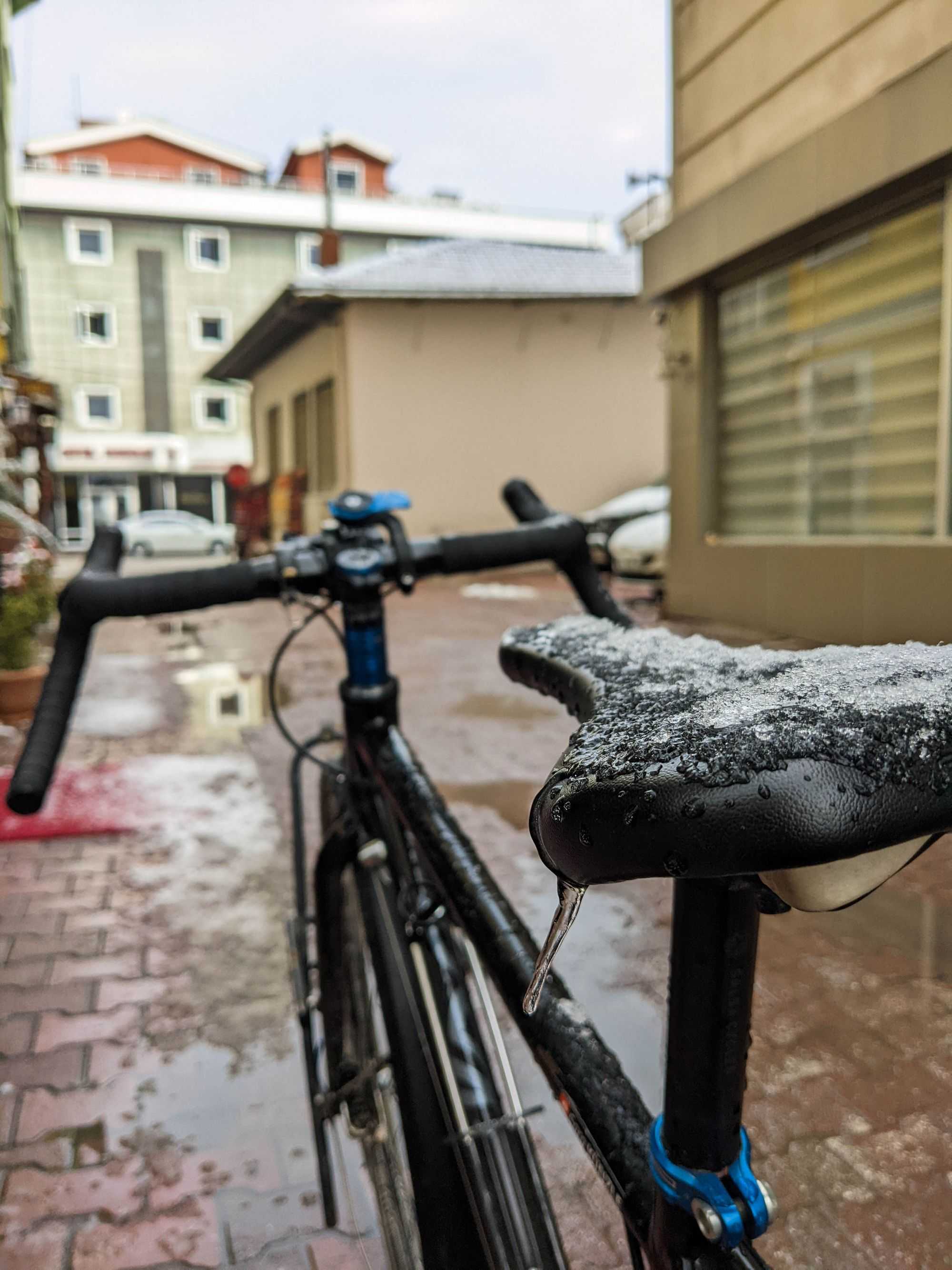
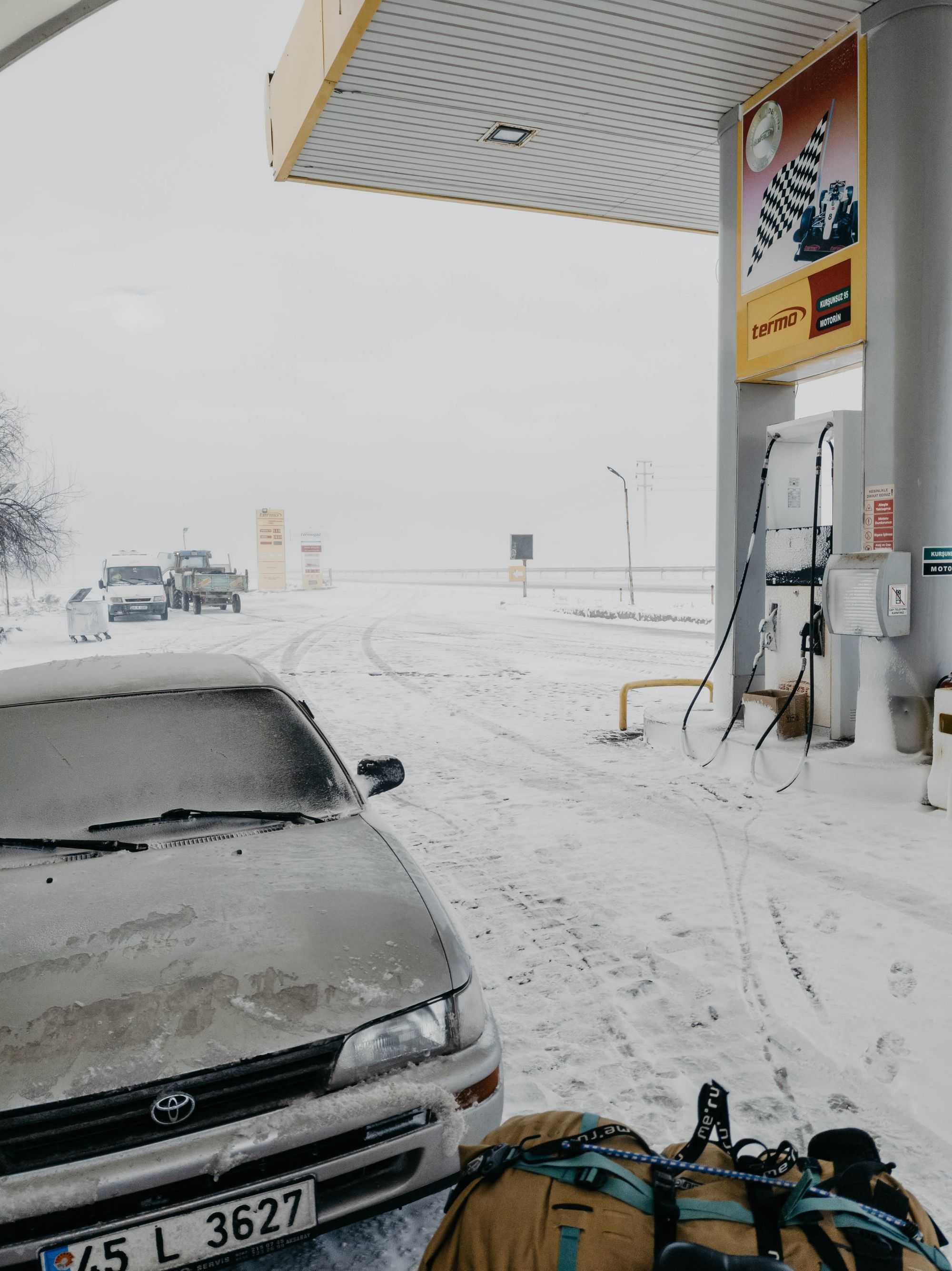
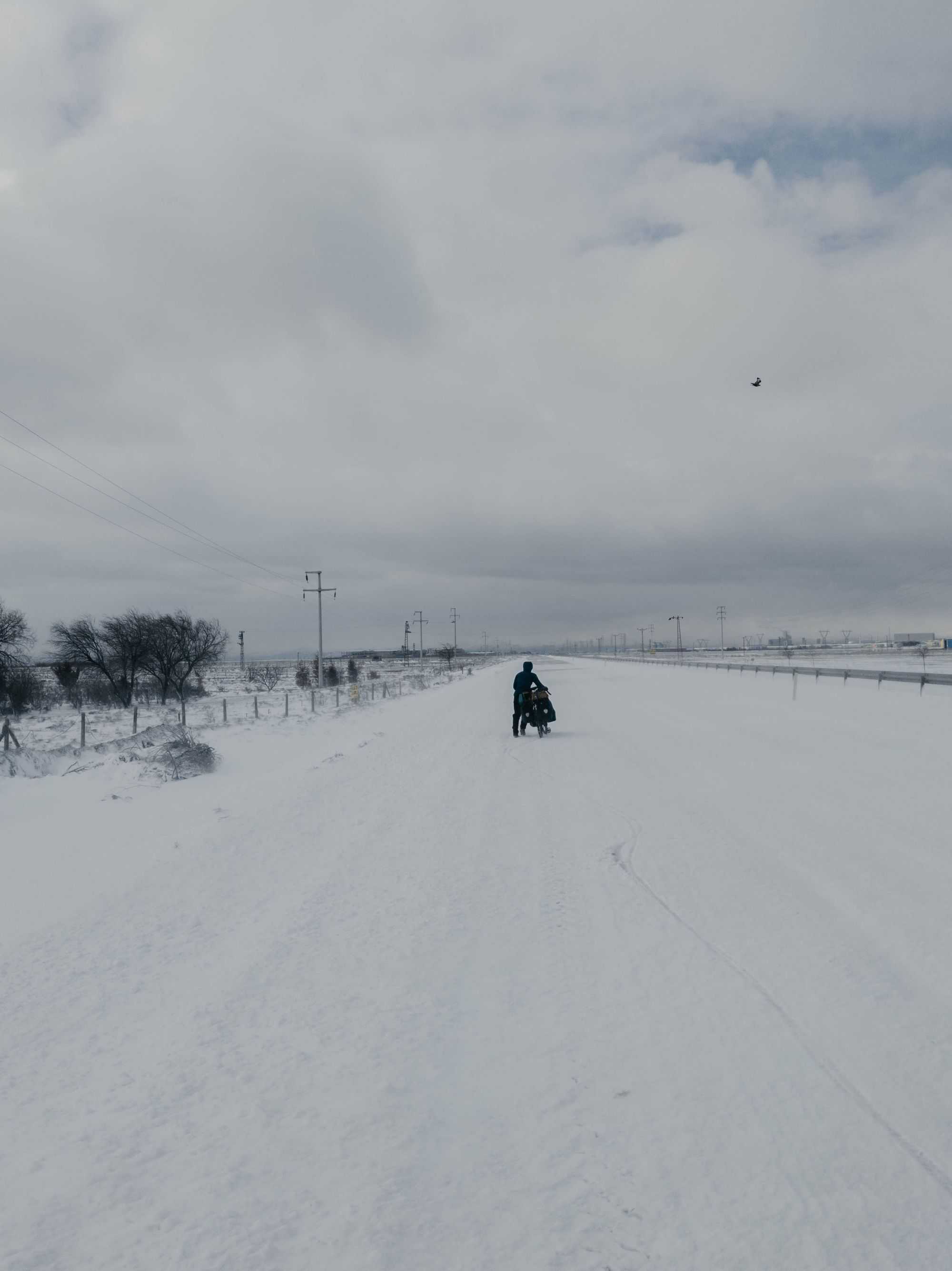
The next day gives hope. The road is dry, the wind less, no rain. Off we go. 100km across the plain. Every 20km or so the desolation is interrupted by a petrol station, where we warm up and are always warmly welcomed. Of course, a Çay is never missing, it is always offered. We are glad, we abandoned the project the day before, we would have had no chance. On this day, however, we manage 100km (for the first time) and reach a campsite with a small guesthouse right next to the caravanserai (hostel at the time of the caravan transports). Today we drove along a stretch of the Silk Road. The accommodation was organised for us by a petrol station attendant on the way. Relieved to have completed this section, we put up in a simple room heated by a stove. The campsite is family-run and in the evening we sit together in the parlour, leaf through old guest books and watch a carpet being professionally repaired. Tired but satisfied, we fall into our beds; that was an intense day.
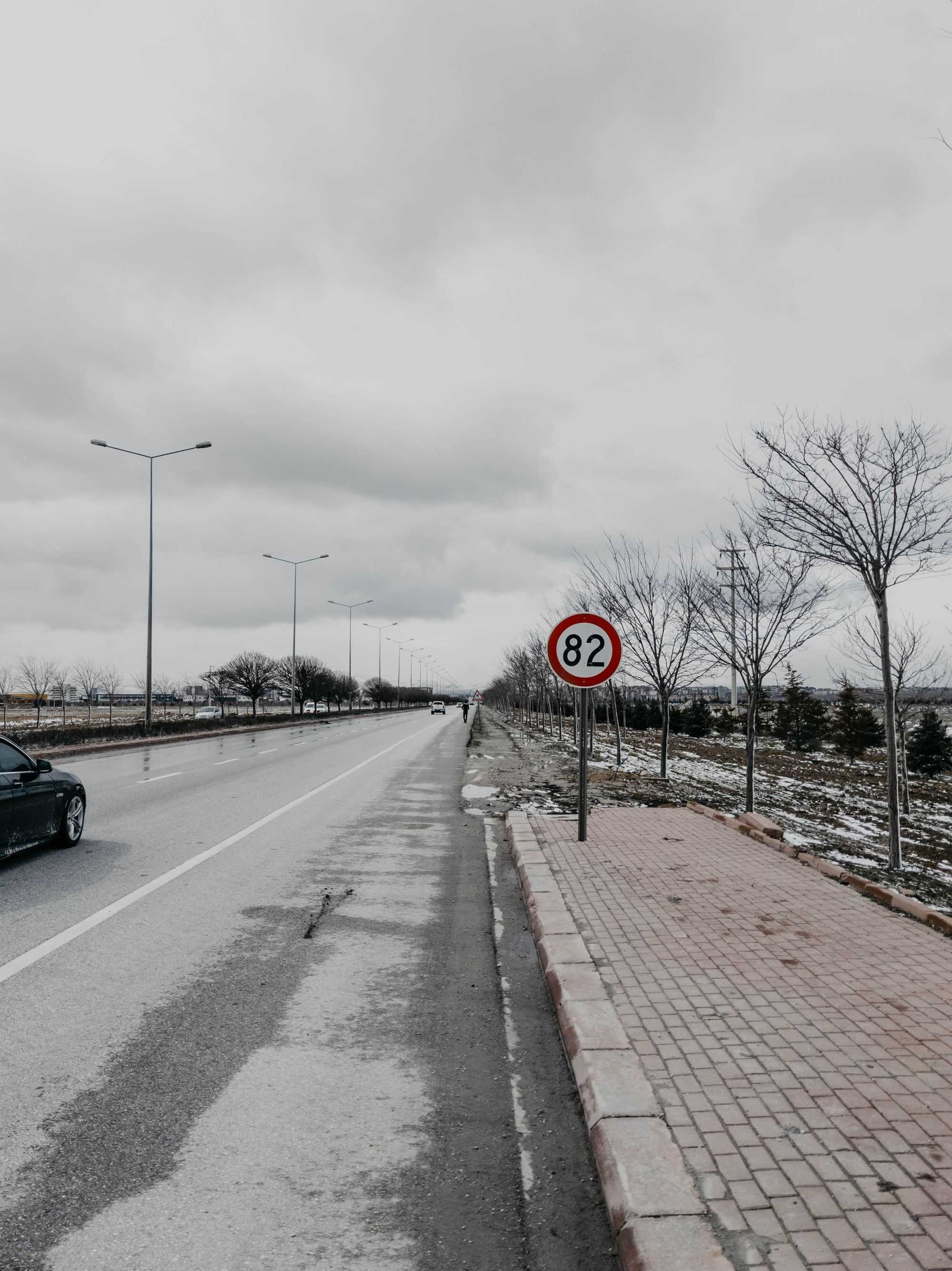
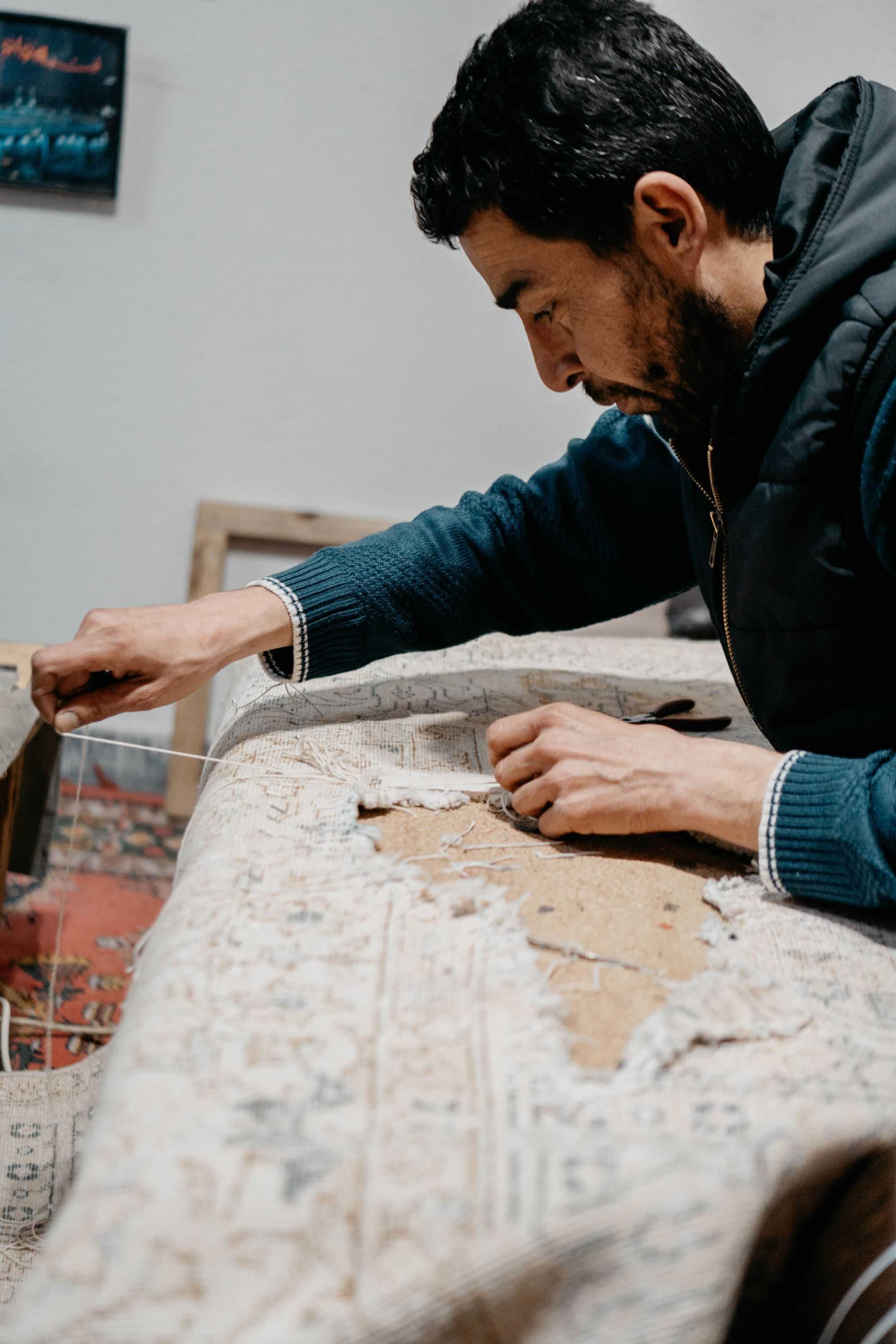
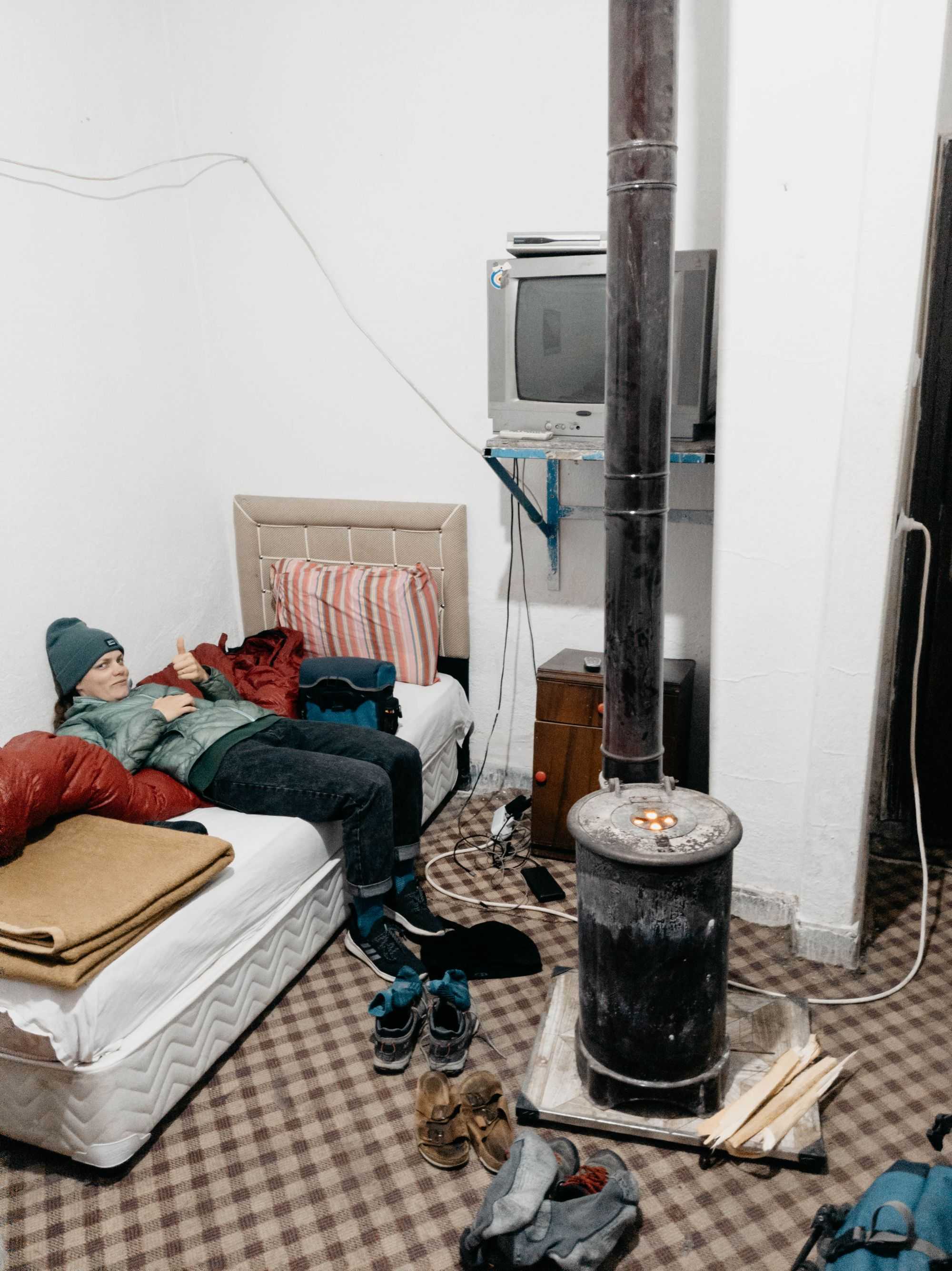
The weather forecast keeps us on our toes the following days as well, but luckily the weather is better than the forecast. Another day on the main road and we reach Aksaray, a lively and booming city. We are happy to find delicious pizza. The Turkish food is really good, but in between we enjoy a familiar taste in our plates. Finally we can leave the wide main road again and explore the area on quieter roads. In view is the snow-covered volcano Hasan Dağı (3253m) and next to us the Ihlara Gorge, which we visit later. On the way, we take a break in a typical Turkish teahouse. An unspectacular building, all men drinking tea and playing games. A peaceful atmosphere. We have to get used to it, the Çay is always offered. We already discover the first spectacular rock formations, a small foretaste of our next destination.
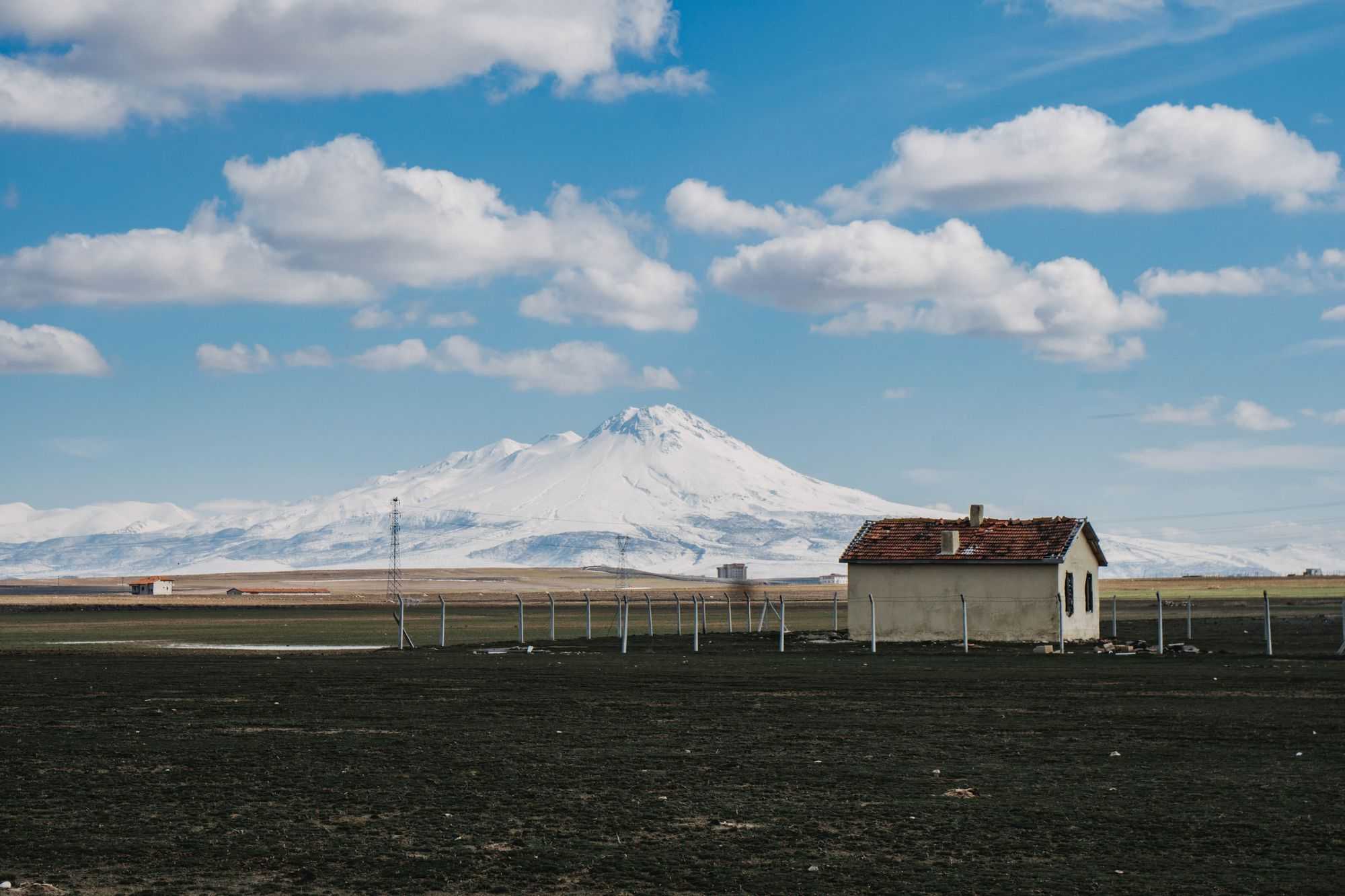
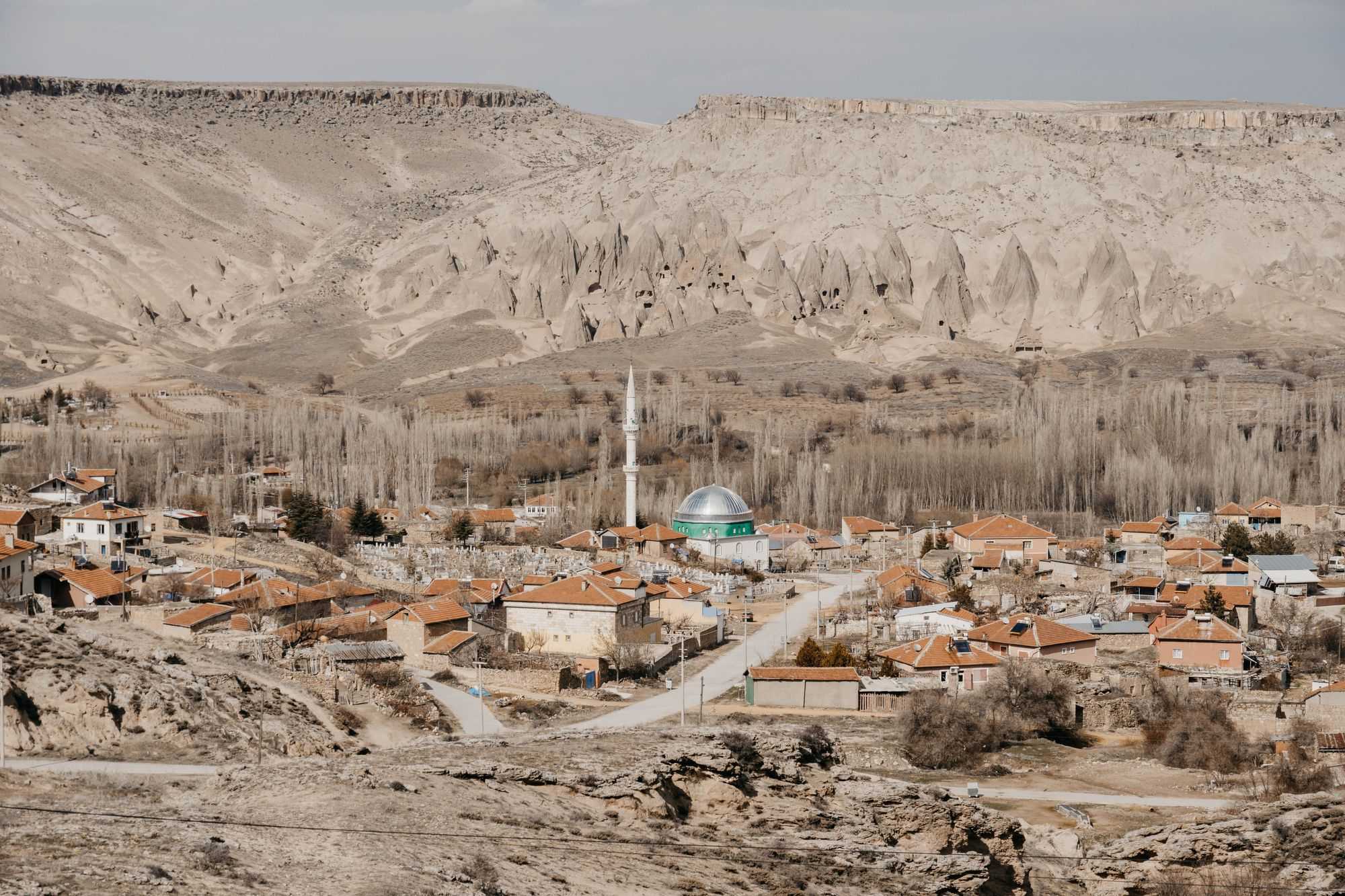
The Ihlara Gorge is 150km long and home to 5o rock churches and numerous cave structures. The gorge has been a settlement area for Byzantine monks since the 7th century, who dug all the buildings. We walk through a part of the gorge and enjoy the insights into history and nature. And already the following day we visit another shelter from earlier times. The subterranean city of Derinkuyu. 8 floors under the earth were uncovered with an area of 2500 square metres, the deepest accessible point is 55m under the earth's surface whereby only about a quarter of the complex was uncovered. In the whole of Cappadocia there are thought to be about 50 such cities, although only 36 are accessible and some may still be undiscovered today. We are very impressed by the size of the site. We wander through endless corridors, see churches, kitchens, ventilation shafts, stables, rolling stones to close off the corridors, and so on. We imagine what life must have been like in these complexes, although it is still not clear whether these underground cities were only sporadically or permanently inhabited. We reach daylight again and cycle the last few kilometres towards Göreme. The weather is now very unfriendly again, fortunately it is only a few kilometres and hardly any altitude difference.
Göreme is an absolutely touristy place in the heart of Cappadocia. We now spend two weeks in this region (not in Göreme). To be continued.
